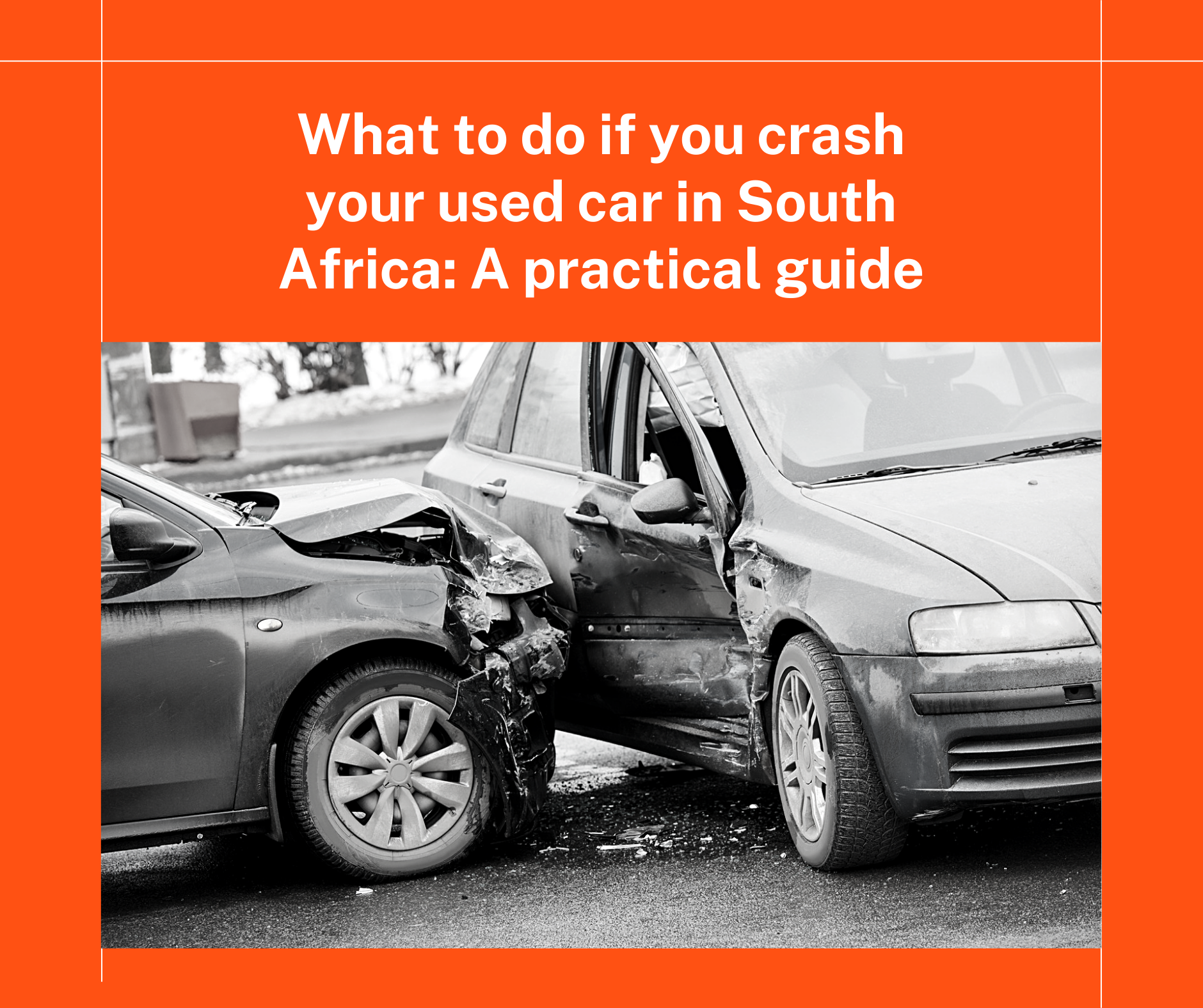Crashing your car – whether it’s a fender-bender or something more serious – is a stressful experience. In those first few moments after an accident, shock and disbelief can take over, making it hard to think clearly. That’s why it’s important to know exactly what to do if you crash your used car in South Africa, ensuring that you stay safe and avoid headaches when it comes to insurance claims and legal matters.
Here’s a step-by-step guide with tips, tricks, and essential advice to help you navigate the aftermath of a car accident.
Step 1: Check for injuries – safety first
After a collision, the first thing to do is make sure you and everyone involved are physically okay. Check on your passengers and the occupants of the other vehicles, and call emergency services (10177) or ER24 (084 124) if anyone needs medical help.
If it’s safe to do so, move your car to the side of the road to avoid blocking traffic and reduce the risk of further accidents. Switch on your hazard lights and place your warning triangle a safe distance behind your car to alert other drivers.
Step 2: Exchange information with everyone involved
To ensure your insurance claim process goes smoothly, you’ll need to gather some key details from everyone involved in the accident. Here’s what to collect:
📱 Contact details
- Names, phone numbers, home and email addresses of the other drivers
- Insurance company names and policy numbers
- Take photos of everyone’s driver’s licences
🚗 Car details
- Make, model, year, colour, and licence plate number of all cars involved
- Take a photo of each vehicle’s licence disc to avoid being given false information
- Note the time, date, and location of the accident, plus weather and road conditions
💡 Pro tip: If the other driver seems reluctant to give their details, don’t worry. A photo of their car and licence disc can help authorities track them down later.
Step 3: Take photos – Your phone is your best tool
Your smartphone will be your most important ally at the accident scene. Use it to document everything. Make sure to snap:
- The position of all vehicles right after the impact
- Road signs, skid marks, or anything else that shows what happened
- The condition of the road – whether it was wet, dry, or poorly maintained
- Damage to all vehicles, even if it looks minor
💡 Pro tip: Take wide-angle photos to capture the entire scene, and close-ups to show specific damage.
Step 4: Be cautious with tow trucks
In South Africa, tow trucks often appear at accident scenes within minutes. While they may seem helpful, it’s essential to only use a tow service approved by your insurer. If your car is towed by an unauthorised company, you could end up facing outrageous “storage and release” fees.
📞 What to do: Call your insurance company immediately and ask for an approved towing service to avoid extra costs. Some insurers also have emergency apps that let you request a tow on the spot.
Step 5: Never admit fault – Let the insurers handle it
Even if you think you might have caused the accident, avoid admitting fault at the scene. It’s best to simply exchange details with the other drivers and let your insurer assess the situation. Saying “sorry” or accepting blame could complicate the claims process and reduce your chances of being compensated fairly.
💡 Pro tip: Be polite but firm. Stick to the facts and avoid getting into arguments about who’s at fault.
Step 6: Report the accident to the SAPS
In South Africa, it is mandatory to report any accident that causes injury or damage to property to the South African Police Service (SAPS) within 24 hours. If you’re injured and unable to report it immediately, do so as soon as possible. Failing to report the accident is a criminal offence and could lead to legal trouble.
Head to the nearest police station with:
- Your ID
- Your driver’s licence
- The details you collected at the scene (car info, contact details, photos)
💡 Pro tip: Make sure to get a case number from the police – you’ll need this when filing your insurance claim.
Step 7: Filing your insurance claim
Once you’ve reported the accident, contact your insurance company to begin the claims process. Provide all the information you collected, including photos, police case numbers, and details from other drivers. Be as detailed as possible to avoid delays.
Bonus tips: What to keep in your car for emergencies
- First-aid kit – Just in case someone gets injured
- Warning triangles – Essential for roadside safety
- Pen and paper – It’s handy if your phone dies
- Charger or power bank – Keep your phone alive for photos and calls
- Emergency contact list – Including your insurer’s helpline
Final Thoughts: Stay calm and focused
Crashing your car is never a pleasant experience, but staying calm and following these steps can make a world of difference. By gathering the right information, taking photos, and avoiding unauthorised tow services, you’ll protect yourself from unnecessary stress and expenses.
Drive safe, but if the worst happens – you’ve got this! 🚗💪
For more tips on car ownership and buying advice, visit www.usedcarreview.co.za.

